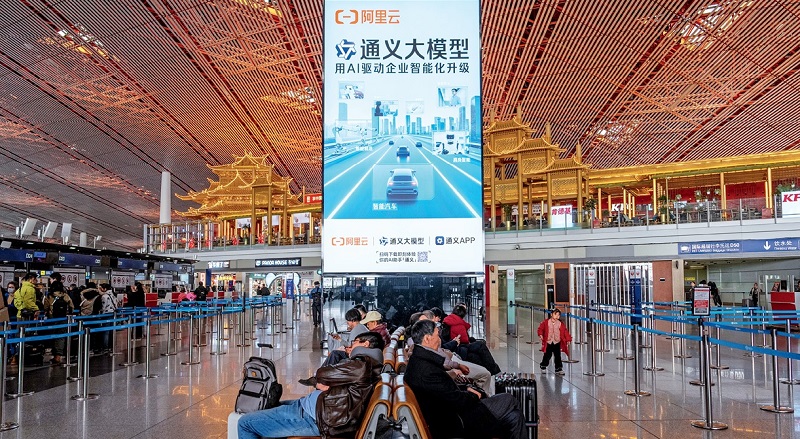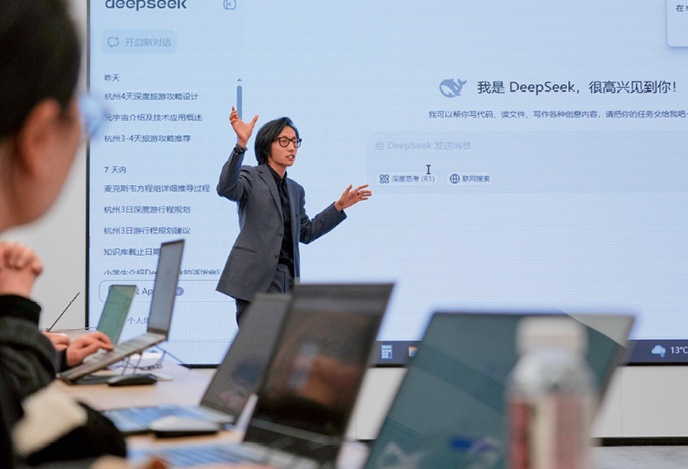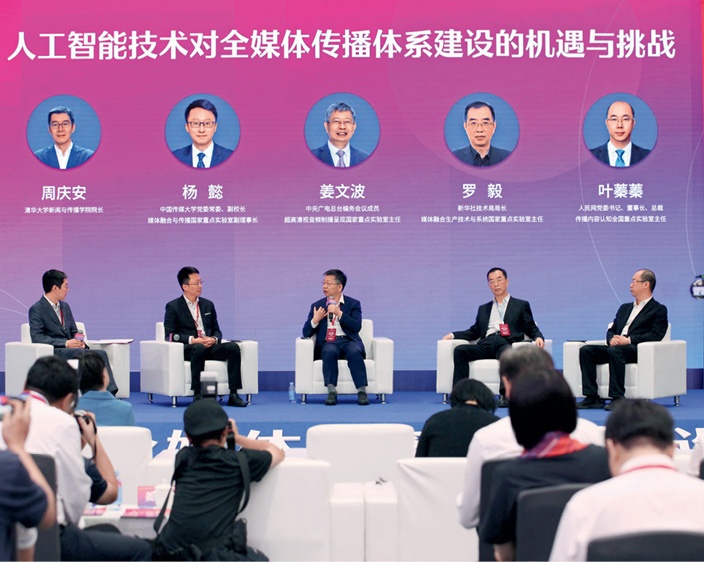With the rapid development of information technology, the media industry is undergoing unprecedented changes. It has evolved from Internet-based communication and communication on social media platforms to intelligent communication. The revolution of science and technology has always been a core force driving changes in the media.
At present, artificial intelligence (AI) is reshaping the media industry, from content generation to business organization and talent. AI-generated content is not merely about technology, but about a revolution in communication. After DeepSeek went viral in January, intelligent communication has become rapidly mainstream, which has greatly accelerated the pace of communication change.
In an era of AI communication, media is no longer content-centered. Content of communication is generated based on computing power, algorithms, and data.
Intelligent communication powered by AI innovation coordinates with social communication, online communication, and mass communication. However, priorities have shifted. What shapes user preferences, and what fuels growth in viewership have changed. So far, mainstream media outlets have not been well-prepared for these AI-driven changes or made systematic transformation keeping up with the times.

An AI advertisement for Alibaba Cloud (China’s cloud computing services company) at the Beijing Capital International Airport on February 28, 2025.
Competition and Change
Traditional media outlets’ dominance over content was weakened and marginalized in the past technological revolutions. When the Internet emerged as a main media platform for communication in the 1990s, mainstream media outlets were able to barely hold their central place in social communication.
Entering the era of social media, mainstream media outlets were further marginalized and began to struggle in terms of public influence and business model.
In the fierce competition between mainstream media outlets and emerging intelligent media platforms, and also between Internet media and intelligent media, those that cannot keep up with the pace of technological innovation will inevitably fall behind.
However, the pace of technological innovation and communication transformation has never stopped, which means that new opportunities always exist. Mainstream media outlets face the biggest opportunity for systemic change with AI development, as they have advantages at the data level. With policy support for turning data into a factor of production, mainstream media outlets can work to build a nationwide integrated technology system to serve as an operator of national public data.
However, the arduous task of transformation requires top-level design and strong execution. Mainstream media outlets need to make significant innovation. In the past, media convergence was advanced mostly with the power of national strategies and policies, and explorations by media outlets. In the future, there should be an integrated technology system and data system to further such convergence. Priorities should be specified at the national level. At the same time, media outlets should work in synergy.

A young teacher introduces DeepSeek and other AI tools to students in Hangzhou, Zhejiang Province, on March 12, 2025.
Reconstructing Communication Ethics
The intelligent communication revolution led by AI is systematically transforming mainstream media outlets on three dimensions: technological logic upgrading, power structure reconstruction, and value rationality return. Mainstream media outlets should understand the structural changes, rise to challenges, and seize opportunities.
In terms of technological logic, they need a complete transition from tool application to logic reconstruction.
There should be a balance between technological efficiency and credibility of information. While comprehensive application of AI technology has lowered the threshold for content production, it has also caused problems, such as information overload and disinformation. So, striking a balance between technological efficiency and credibility of information has become a core agenda of social governance in the digital era.
The essence of the challenge lies in building a new trust mechanism for human-machine collaboration in the process of reconstructing the communication order through technology.
In terms of technological governance, it is necessary to build a trustworthy underlying AI framework. For example, in terms of optimizing data quality, Tencent’s AI assistant Yuanbao adopts a dynamic data cleaning system to improve the accuracy in identifying false information.
In terms of institutional innovation, it is necessary to reshape the paradigm of digital content governance. There should be a credibility grading system, double checking AI-generated content in fields such as government affairs and medical treatment. A national-level AI content monitoring cloud platform could be established. So could an algorithm filing system requiring mainstream media outlets to disclose core algorithms.
For ethical reconstruction, there should be value rationality of human-machine collaboration. While implementing a human-led model with AI assistance in the field of news production and establishing a human final decision-making mechanism, AI literacy should be integrated into the national education system.

Experts and scholars discuss opportunities and challenges of AI technology in the construction of a multimedia communication system at a forum in Shenzhen, Guangdong Province, on May 24, 2024.
A New Social Contract
The multidimensional governance system is, in essence, a “social contract” reshaped in the digital era. The trustworthy AI ecosystem of the future will be a rational trio of technology, institution, and values, for which multiple parties should form a governance synergy and jointly create credibility.
There should also be a balance between algorithmic recommendations and public values. The core of intelligent communication lies in content generation and communication by machine, which has completely subverted the previous human-oriented content generation and communication mechanism.
The present situation, especially in terms of the production scale, communication speed, and efficiency of information dissemination, is incomparable to the past. However, the emerging mode of communication also faces a series of unprecedented challenges, including machine illusions, the proliferation of false information, privacy protection, and cybersecurity threats.
Although traditional governance mechanisms can still play a role in tackling such challenges to some extent, technological means are key to solving them and enhancing information credibility. Therefore, governing technology with technology will become a cornerstone of intelligent communication.
The era of intelligent communication is also the era of integrated communication, where various communication mechanisms are interconnected. In order to achieve comprehensive goals, diversified strategies must be adopted and the dual guarantee of technical engineering and social construction in parallel promoted. This includes building a triple governance framework in technology, society, and globe.
In this process, the existing governance mechanisms have to be leveraged while new forms of governance should be explored to accelerate the pace of innovation and development. Only in this way, can humans better cope with the challenges brought by intelligent communication and achieve healthy and sustainable development of the communication industry. 
FANG XINGDONG is a professor at the College of Media and International Culture of Zhejiang University.